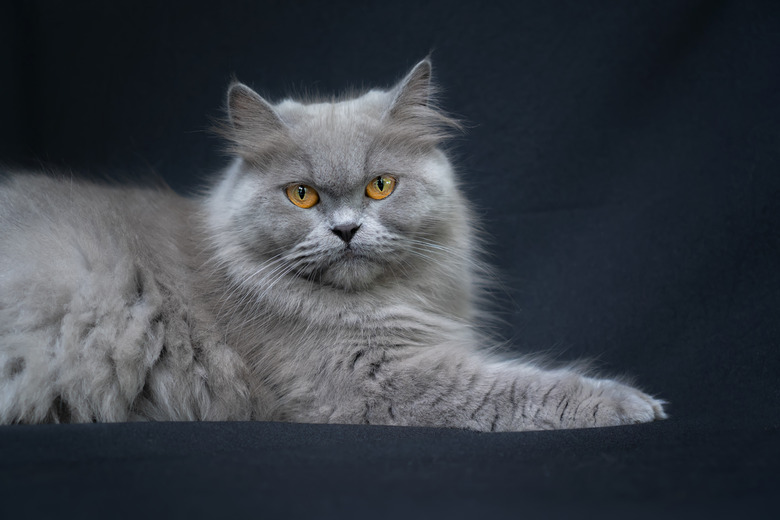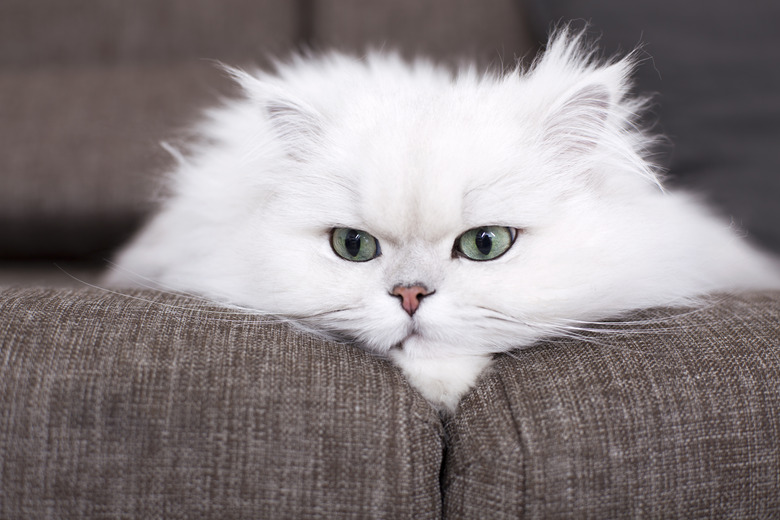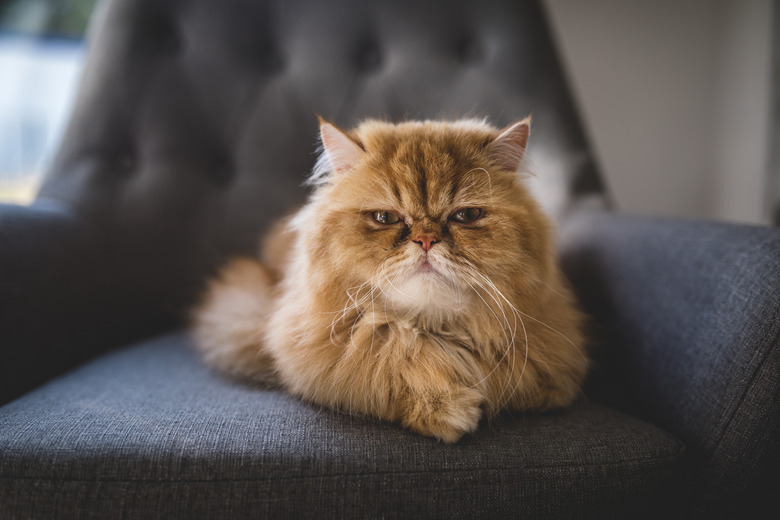How To Mate A Persian Cat
Your sweet little Persian cat is probably so adorable that you'd love to have several more just like her. With their luxurious coat and adorable flattened face, it's no wonder that Persian cats are one of the most popular cat breeds in the world. Before letting her bring more kittens into the world, get acquainted with Persian cat breeding.
Know the breed standard
Know the breed standard
Before you consider breeding your Persian cat, familiarize yourself with the breed standard for Persian cats and make sure your cat is a good example of it. No matter how adorable your pet may be, reproducing poor traits in the breed can result in cats that no one wants to buy, and they could eventually wind up in the animal shelter system.
Totally adorable traits, such as crossed eyes or a kinked coat, might make your kitty precious to you, but those are just two of many undesirable breed traits that are major disqualifications in the show ring. Review the breed standard for any disqualifying characteristics your cat might have.
If your cat is breeding quality, chances are you paid several thousands of dollars for her from a reputable breeder. Pet-quality Persian cats are sold regularly by breeders but usually for less money than breeding-quality felines.
Consider her genetics
Consider her genetics
You won't find high-quality Persians at pet stores, on Craigslist, or at the local flea market. The best bet for buying a breedable Persian is to look for a registered cattery through the Cat Fanciers' Association's Find a Breeder page.
Check the breeder's website to check for genetic health issues for which the breeder tests and health guarantees offered. Check the pedigree of the parents and note whether the last four generations show mostly CH (champion), GC (grand champion), RW (regional winner), or NW (national winner).
Keep in mind that a champion designation only means that a cat has been to one show and wasn't disqualified in six rings. Grand champion means that the cat was judged better than at least 200 other cats. Regional winner and national winner titles are even more desirable. Look for more GC, RW, and NW designations than CH in the cat's last four ancestral generations when buying a cat to breed.
Finding a mate
Finding a mate
If you're looking to start a Persian cattery, you'd want to buy two to three females and one male. However, if you're looking to breed a quality female you already have, you might be able to find a stud. Finding a breeding-quality stud isn't always simple, as most registered catteries don't offer stud-for-hire services.
Persian cat maturity age is another consideration. Although females can be bred at 10 months old, male Persians don't breed until around 20 to 24 months. If you prefer to buy your own stud, consider obtaining a proven breeding male from a cattery.
Keep in mind that both male and female cats will spray urine to mark their territory, but unneutered male cats — known as "toms" — are the most likely to do so. Some cat breeders keep their breeding male in an outdoor house with an enclosure to contain the pungent smell and bring the breeding females — also known as "queens" — to the tom when breeding is desired.
Know how to show
Know how to show
It's essential to show your parent cats to bear witness to the fact that you're breeding to the standards for Persian cats. New breeders should begin by buying and showing a neutered cat in a premiership class. This immerses you in the world of showing cats, and you can find out whether the grooming, training, and other parts of the experience are for you.
You could also show the pedigreed female cat you already have. Letting her compete in the ring will be a good indicator of whether she possesses the traits that will appeal to Persian cat fanciers wishing to buy offspring.
The show ring provides a valuable resource, as you will be shoulder to shoulder with experienced cattery operators who can give you tips about Persian cat breeding.
Prepare your environment
Prepare your environment
Each breeding cat should be kept separately in her own room or roomy cat cage (at least 5 feet long with one shelf to jump onto) for several reasons:
- Planning your female's breeding times: Keeping cats together will never let you know when your cat became pregnant and when she's due.
- Protection of the queens and kittens: Toms will sometimes decide they need to breed with a kitten, resulting in death or spinal injury.
- Protecting your female: Even though she may cycle into heat as early as 5 months old, letting a tom breed her or becoming pregnant before she's fully developed at 10 to 12 months can be dangerous to her health.
- Letting a queen recover: Queens could get rebred just a few weeks after giving birth, which depletes them physically.
- Health considerations: Males are prone to bladder stones that can block the urethra, and their urinary output should be checked every day. You won't know if they're not peeing unless they're using their own litter box.
- Protection during pregnancy: Pregnant females should be confined the last two weeks of pregnancy to prevent them from misjudging a jump that could result in injury or miscarriage.
- Providing security: New mothers often get nervous and move their kits around, sometimes forgetting one under a couch or behind a bed. Giving mom a cage can help her feel secure and protected.
Persian cat heat cycle
Persian cat heat cycle
Knowing a cat's signs of heat is the final step you'll need to take before letting her get together with her mate. Unlike dogs, cats don't usually spot blood. Your cat may yowl, spray to mark her territory, arch her back, or walk around with her tail lifted stiffly.
A Persian cat heat cycle begins at about 5 to 6 months old; however, breeding her before 10 to 12 months old could be harmful to her. Male Persian cats are generally significantly larger than females, so letting a 2-year-old male mate with an immature female could result in a broken spine or other injuries.
Bring your female to the male's environment for breeding. They'll know what to do naturally. Leave your female with him for a day or two. Cats come into heat every few weeks, but it is the act of mating that stimulates ovulation, so they'll need to be free to interact for more than just a single copulatory act.
References
- The Cat Fanciers' Association: The Cat Fanciers' Association Announces Most Popular Breeds for 2018
- The Cat Fanciers' Association: Persian Breed Standards
- The Cat Fanciers' Association: Find a Breeder
- Cacao Cattery: A Guide to Entering the World of Breeding & Showing Cats
- VCA Hospitals: Cat Behavior Problems – Marking and Spraying Behavior


